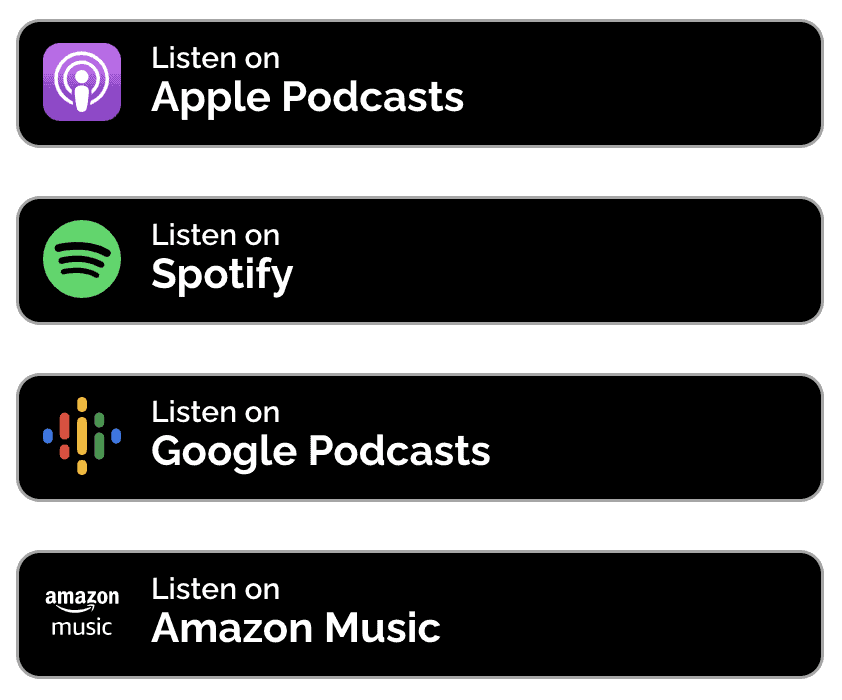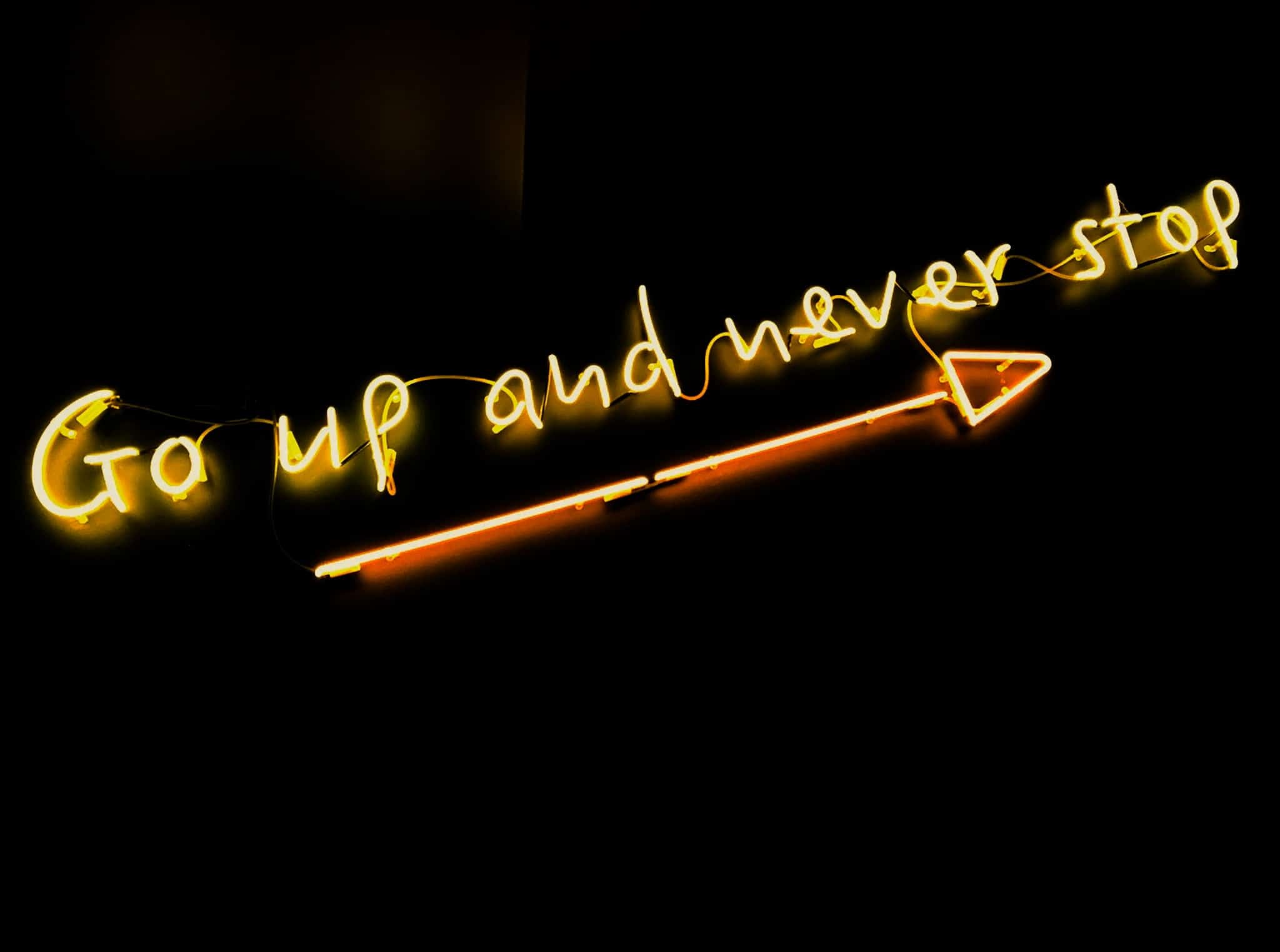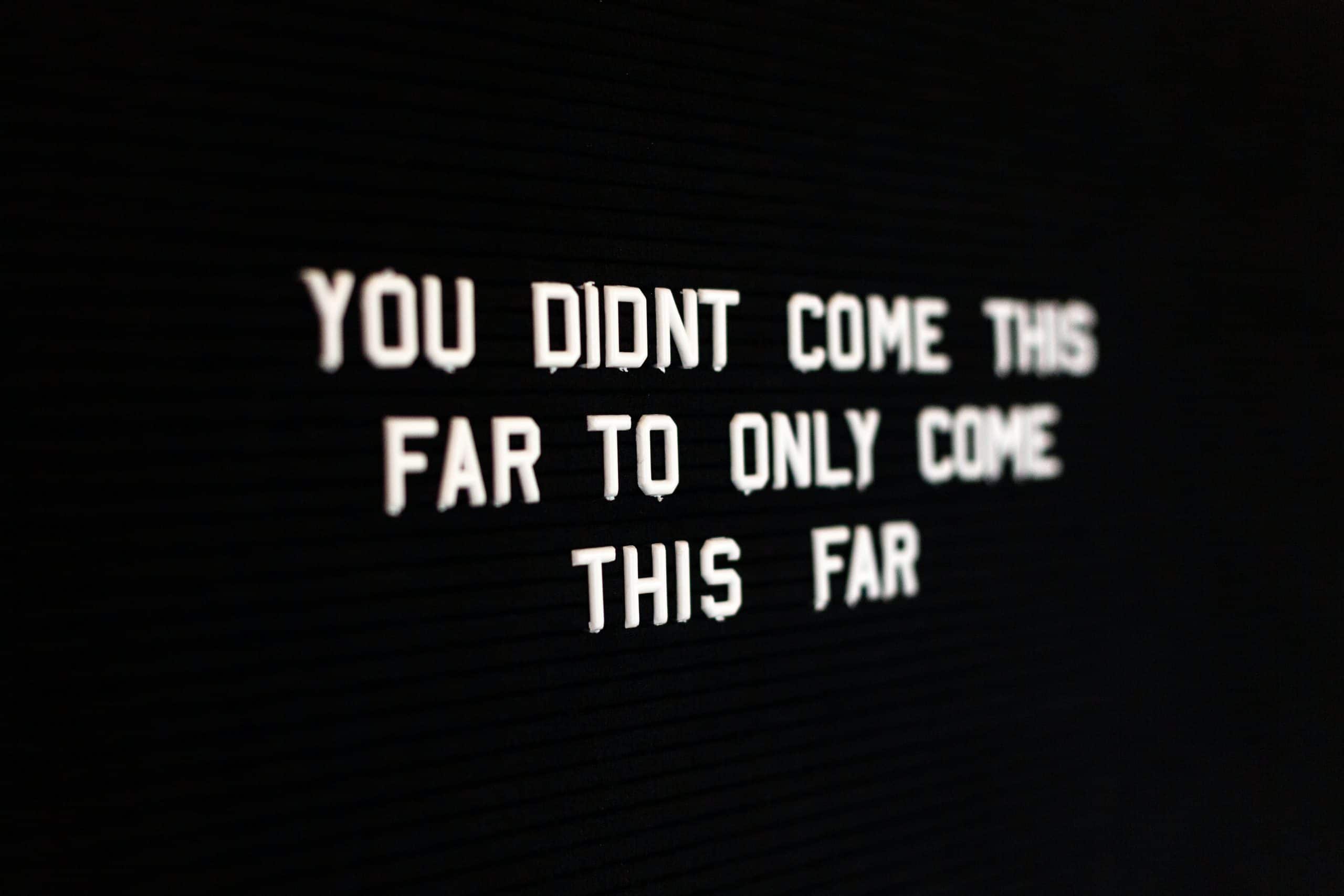Listen to this episode with Pie wherever you get your podcasts:
Pie Aerts is a successful photographer & co-founder of the charity, Prints for Wildlife. Not only is Pie a master of print sales, having raised $1.75M for African Parks, but he’s also a deep thinker on the value of building a community, social media marketing and why self-reflection is your key to art career freedom. In this episode, we also hear Pie’s inspiring story on taking the leap of faith to become a full-time photographer and how you can keep your career moving forward, regardless of the obstacles that are thrown into your path.
To sign up to the Prints for Wildlife newsletter, click here
All images © Pie Aerts
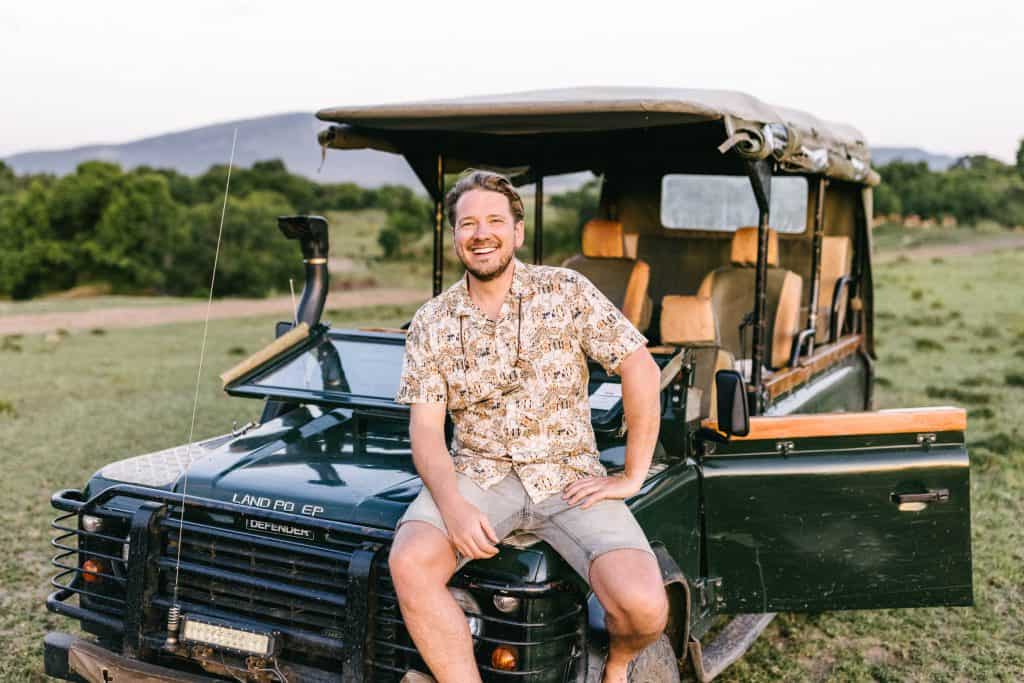
Key Takeaways
10:00 – Take the leap of faith
“I’m a big control freak, and I never really let myself step out of that control zone. Now looking back to earlier in my career, I really regret that I didn’t surrender to not having any control earlier. In 2022, creative decisions but also commercial decisions I take, are increasingly based on my trust that the dots will connect. A key bit of advice to my younger self would be just go for it, take the leap of faith and trust that it will work out for you”
13:50 – Life changes don’t happen overnight – embrace the slowness
“Many people believe that starting a dream, building a new future or changing your life is a one day to the next event. Whereas in reality it takes years. One piece of advice I always give is embrace the slowness. When you look back, all those small steps will make sense to you. I think people, especially in today’s social media driven world, want quick tips. But if I have learned one thing in the past 6-7 years is that embracing the slowness of it all has been the main driver of my success.”
15:37 – Engagement matters, not the number of followers
“People ask what are 10 tips for building a social media following. I couldn’t line that up for you. That’s because I think the most important tip these days is to create for yourself, and not for anyone else. If you believe in your work it’s so much easier to radiate that energy and spirit to the rest of the world…One thing I can say about numbers is they are not important. You may say that’s easy for me to say as I have substantial followers, but if I have learned one thing it’s that I would rather have 1K followers who buy than 100K that swipe by”
20:00 – 38:00 – Prints for Wildlife
This section is the captivating discussion on Pie’s motivations and fundamental beliefs at the heart of the charity print sale he runs, Print for Wildlife. There are so many inspiring takeaways we could not pull out a single quote!
39:00 – Social media vs traditional media
“We have experienced first hand by setting up Prints for Wildlife the effective difference between traditional media and social media. We’ve been testing it, and comparing them there is a mind blowing difference. There is not even a runner up here, it’s social media that runs the show. It’s people that follow you on Instagram & sign up to your newsletter that buy the art.”
48:40 – The best way to start selling prints
“Just stripping down to the bare minimum is the best way to start selling prints. You’re better off offering 5 prints to your friends than 100 prints to a bunch of strangers. If your friends are buying it, and it ends up in their homes and people ask about it when they visit for dinner. One day, they will come and buy from you. It comes back to embracing that slowness.”
56:40 – The importance of your ‘why?’
“Try to turn inwards rather than out. Question yourself; ‘why do you want to pick up the camera in the first place? Why do you want to tell that story?’ Once you understand that for yourself then it becomes really easy to convince other people to buy your prints, galleries to show your work and people to believe in those same dreams.”
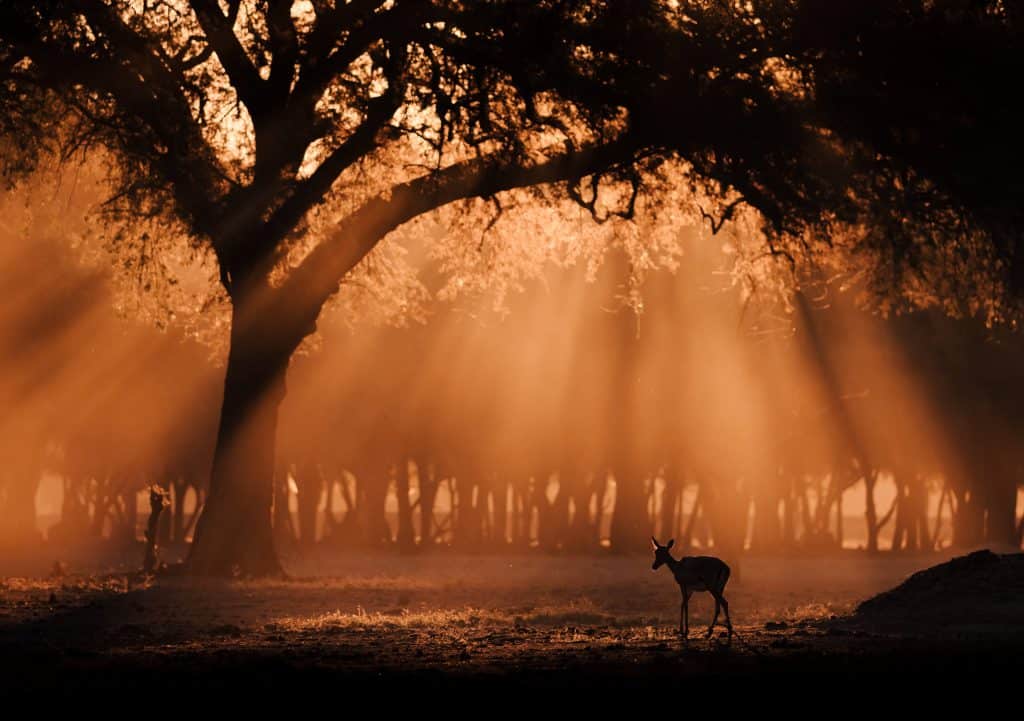
Transcript
Stuart: I wanted to start actually just by asking you, how did you get started in photography? Because you focus a lot on wildlife photography, I was wondering was it the sort of subject matter first, and then you started taking photographs or were you a photographer first and the subject matter sort of found you?
Pie: Yeah. Good first question. We have to dig in time a little to understand the answer. See, I’ve been shooting for 15 years now of which the last three to four years predominantly in what people refer to as wildlife photography. I’m not an educated photographer in the first place, but I’m definitely not and I wouldn’t consider myself a wildlife photographer. But by looking at my work of the past three-four years, you could argue that I am one, right? So in essence, I’m just a photographer and I’m really struggling in putting a finger on what kind of photographer I am.
If we travel back in time, let’s say 2004, it’s about when it started. I was predominantly interested in human interest stories and travel photography and not at all in landscapes, not at all in nature, not at all in wildlife. It was all secondary which somehow grew upon me as I grew older. And I moved with the trends as well. So back in 2015 it was very trendy to shoot landscapes and put them on Instagram and get a lot of likes, and you would pretty much just become famous overnight. I’ve been part of all those trends and those phases, but that was an opening for me to temporarily step out of my comfort zone.
In essence I’m really kind of educated on the street. I wouldn’t call myself a street photographer, but I’ve been shooting on the streets for many years and stepping out of that comfort zone of shooting on the streets and suddenly moving with that trend and starting to shoot landscapes and nature stories and essentially wildlife stories, was a great opportunity to just broaden my skill set. If you would ask me how you see yourself, I don’t really have an answer. At the moment I’m shooting lots of stories. I call them coexisting stories that happen at the intersection of nature, wildlife and human interest.
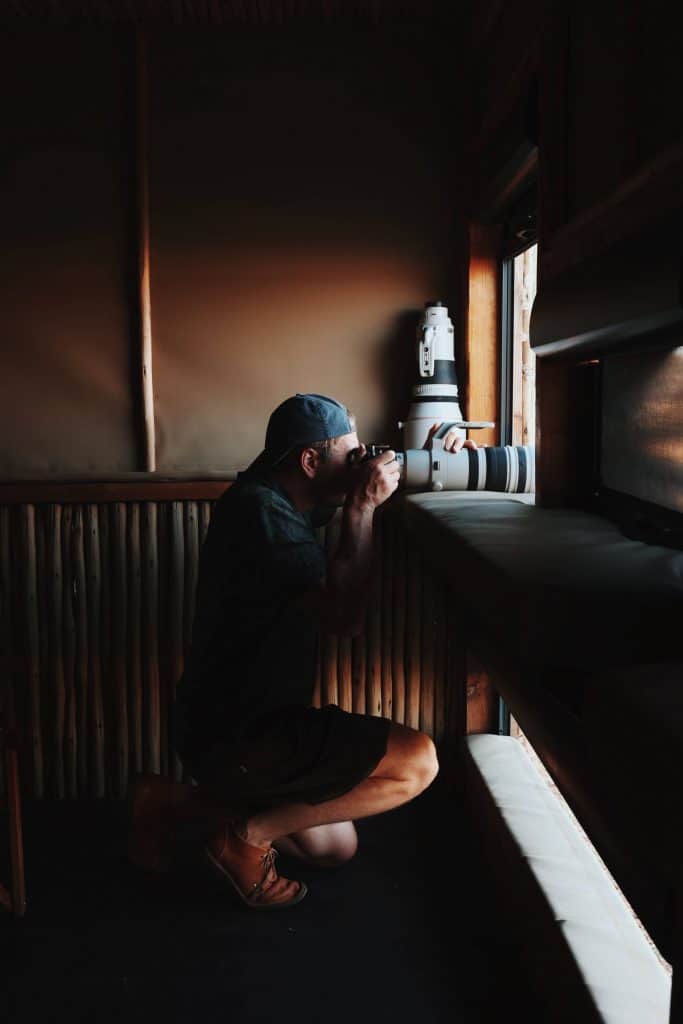
Stuart: How did the first move into the nature and landscape type of thing happen? Is it just about being open to opportunities that come your way and being flexible in terms of, okay, I’m gonna go and shoot here because there’s an opportunity here. Was it a case of just taking a camera with you and shooting what you saw and then looking back at it and going, wow, yeah, I actually really like that and I’m really enjoying shooting that or was it some other drive, like putting stuff out there and getting really good feedback on it?
How did the move from being a human interest photographer or street photography into the most recent incarnation happen?
Pie: It’s a cliche answer but it’s very true in my case. Photography for me is all about connection. Building a connection not only with your subject, but with the environment you operate in. Building a connection with a long term story you’re working on. Building a connection with the people that actually view your work. So photography is all about that for me. About building connections with whatever it is.
I always had a weak spot, ever since the beginning, for indigenous culture and indigenous wisdom. So I think that is how my human interest was sparked and especially in an ancient kind of fashion. In the early days, in the first years, I was visiting India 3-4 times a year because I felt a really strong connection with the ancient history of that place. And that was, for me, a ticket into more curiosity and an entrance into using that camera as the window into a world that was very new to me and very hard to understand at times, but also increasingly interesting to visually capture. So the viewfinder, for me, became a magnifying glass in a quest for finding beauty. See, as a photographer, I’m not your typical photojournalist, but I would rather see myself as a realist but an aesthetical version of realism. I always try to frame things as they are, but in my own aesthetical representation of it. So the early days really were inviting me to work on that narrative.
Back to the beginning of your question, I think when you spend lots of time in indigenous culture, you do start to see that those cultures are very interlinked with nature as well. And there is a deep connection between those two. So that was my entry into shooting more nature driven stories and more nature based stories. Every story I shoot is close to my heart, but the stories that are the closest to my heart are exactly about that dimension, about the combination between indigenous wisdom and how that is linked to the natural world. And how we actually should conserve those traditions and should conserve that knowledge and wisdom into maybe modern ways of thinking.
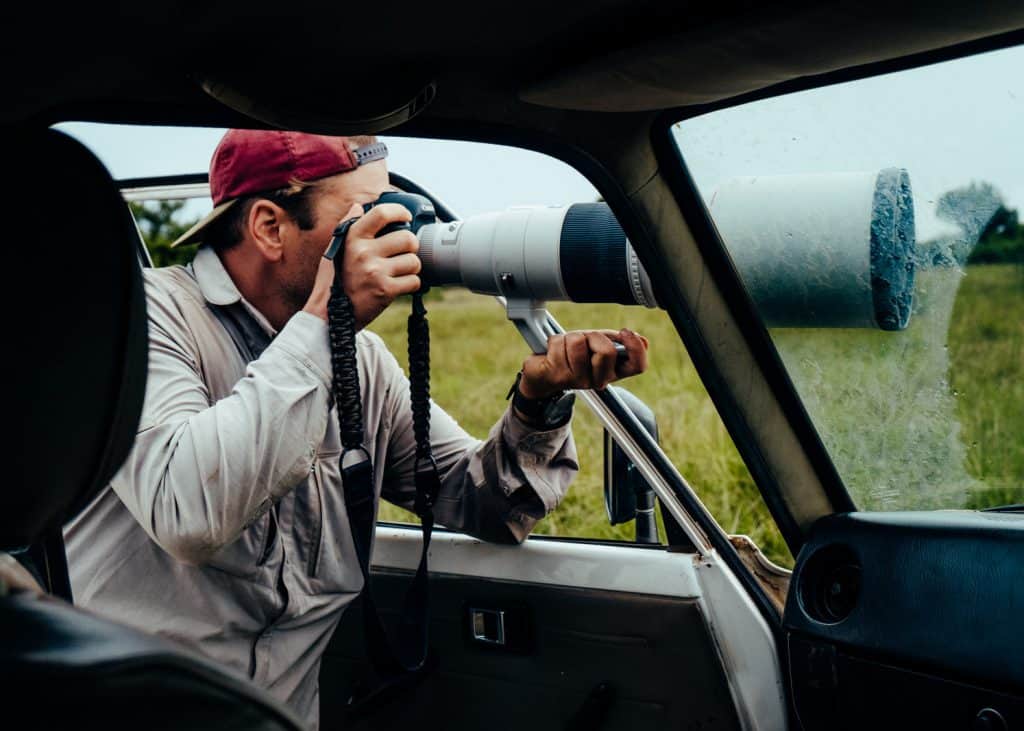
Stuart: At what point did you become professional like this was your sole career and source of income?
Pie: That happened in early 2018. So I never studied photography. I never studied any creative profession. I come from a commercial background. I studied business after my master’s. I enrolled in a corporate traineeship and worked in a commercial company for eight years in retail and commodity trading, which is like the opposite of my life now.
I never really had that creative support from an educational point of view but as a child, I was always drawing. I was always visualising, conceptualising, dreaming lots and lots about far away places and cultures. And so in essence that is ingrained into my system but I somehow disconnected along the way, just going head first into the rat race and wanting to become the next big CEO. All of that happened over the course of 10 years until I started to figure out when I was in my early thirties, that I was losing my personal identity in some way. So then I decided, it’s time to question your being. It’s time to question your creative integrity. It’s time to question what kind of photographer you actually are now and what do you want to become in the years to come? And the biggest question was, do I want to do this full time? Yes or No.
That decision I made in early 2018. I quit my job. We rented out our home in Amsterdam and my girlfriend and I left on an almost two year trip around the world, in my case, to rediscover that little identity crisis I was going through from a creative point of view, but also from a career point of view, questioning what’s next. The outcome of this was not only the decision to go full time, but it was also my first book which launched in July 2019. And that kind of was the start of a new phase in my life.
Stuart: Was it scary? Did you ever think, what the hell am I doing?
Pie: Scary is an understatement. But yeah, it’s very scary and in many different ways. Also in ways I didn’t previously anticipate. I’m a big control freak and I never really allowed myself to just step out of that control zone. Of course looking backwards is always easier than looking ahead of you but when I look backwards now, I really regret that I didn’t surrender to not having any control any earlier, if you know what I mean. Somehow, looking back, it all worked out. Nowadays, in 2022, creative decisions but also commercial decisions, I take them increasingly more and more based on the trust that the dots will somehow connect to the future.
My younger self; one piece of advice back to 2018, it would, for sure, be to go for it and just trust that it will work out for you because your path isn’t laid out anyways.
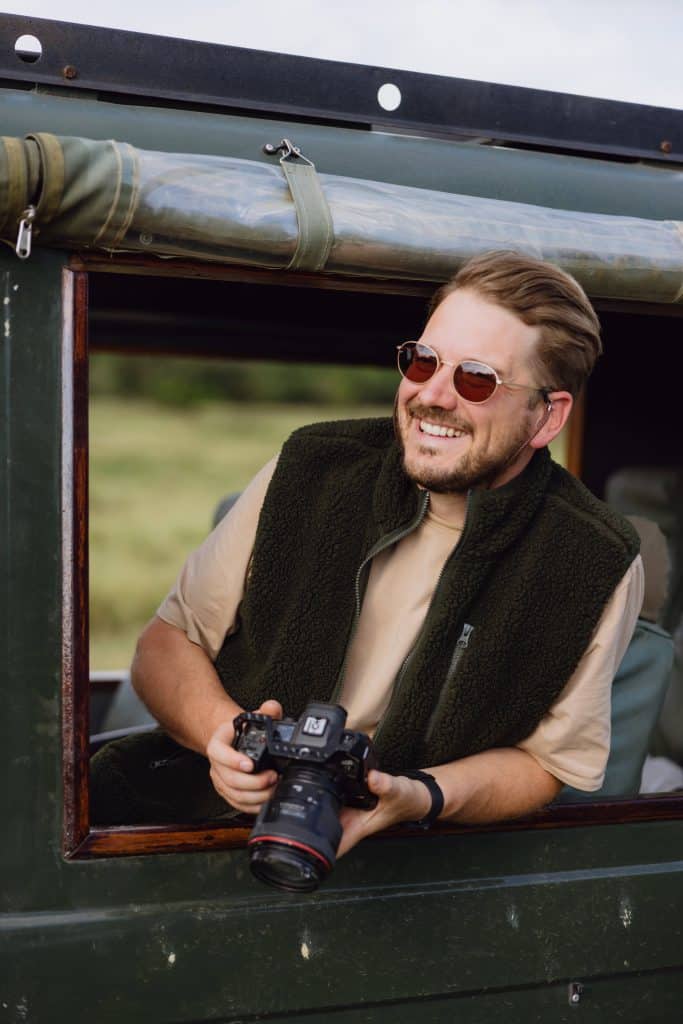
Stuart: We have this thing in the UK, I’m not sure if you have this in Holland, called The Great Resignation; lots of people leaving their jobs.
It usually takes some sort of life changing, earth-shattering event, either personally or collectively as a society, for people to go, oh my god, what am I doing? Most things I’ve been putting off for years and years, which you are always gonna put off, it’s always gonna be next year. And it takes that kind of moment for people to go, I’m actually gonna go and do it. Was there any kind of moment for you, a particular moment?
Pie: I was just completely burned out on not being able to make that decision. So I’ve been thinking about and dreaming up all different scenarios in all the years before that Great Resignation happened to me, but I never really had the balls to make the decision, until my body was like: Dude, you have to stop. Now it’s time to make up your mind and think about what you really want in life. So my body was the wake up call. It just put me out of business for like almost a year and I had to recover. I went through lots of different ways of healing and then essentially in early 2018, I was strong enough and had enough confidence to just go for it.
I think this wake up call comes in many different shapes and forms. It’s very personal. My experience was very physical and by the time I recovered, I was feeling stronger than ever to just go for it.
Stuart: It’s amazing. The amount of people that I talk to, who have taken that leap of faith. I think I’ve rarely heard anyone say they regret it.
Pie: Never. Actually, when I was in full recovery mode, people that went through it themselves, were telling me, this is the moment in your life in eternity. You’re gonna be grateful for the fact that it actually happened. And I was always laughing at these people. Now 3-4 years later, I’m starting to understand and for the first time now, I’m starting to sense why people said that to me.
Stuart: You take that sort of step and you are then focusing a hundred percent on your creative practice, in your case photography but whether it’s photography, painting, illustration or whatever, that focus gives you the ability to take it to another level. And also there’s that sense of well, you’re committing now so you’re gonna have to make it work.
It reminds me of Cortés when they landed in Mexico. They were, I think, 600 men and faced with these tens of thousands of Aztec armies. He ordered the boats that motored there to be burnt. They burnt and scuffled their own boats. He said, the only way you’re getting back now is if you succeed here. There’s no retreat.
I often think about that story, in terms of level of commitment; if you’re really gonna go for something, then you’ve really just gotta commit to it and believe it’s gonna happen.
Pie: Yeah, I totally agree. The pressure was on from day one. But there is one thing I wanna add to that. And that is, I think, important to mention when you talk about advice to people that are going through similar challenges in life, and that’s something I always address. For me and I think for the majority of the people, it should be a gradual transition and not at all like a Cold Turkey approach. Many people believe that starting a dream or building a new future or changing your life is like a one day to another event. Whereas in reality, often it takes years and years and years. Sometimes even subconsciously already transitioning into that new phase.
So one piece of advice I always give people that ask me, how did you do it? Are there tips? Are there tricks? Are there shortcuts to just turning your life upside down and starting all over again? Slow down, embrace the speed, make it gradual, make it slow and steady. And if you look back, you’ll see that all those small steps, they all make sense to you. And I think people, especially these days in this social media driven world, they all want it to be quick and effective. If I learned one thing over the past 6-7 years is embracing the slowness of it all has been the main driver of my success.
Stuart: Okay, so don’t burn all the boats. Just burn them one at a time.
You’ve got a fantastic following on Instagram for your work. How did that come about?
Pie: I can tell you the romanticised story or the real version. I have a love and hate relationship, like many creative people these days, with social media. And I’ve been having that actually since the beginning. To be quite honest, in the beginning, I never really had a plan. If I’m looking back now, I would do things completely differently. So sometimes people also consult or ask about like the 10 tips for building a social media audience. I wouldn’t be able to line them up for you.
I think the most important tip these days is to create for yourself and not for anyone else. There’s just so much social pressure, in not even young communities, but in all communities, to obey the rules of whatever, your friends, society, church, your parents, your girlfriend, your kids. But if you go inwards and you go back to the essence of creating in the first place for yourself and if you believe in your work, it’s much easier to radiate that energy and that spirit to the rest of the world. So that would be my number one and actually the only tip I would give about how to build an audience.
But if I go back in time, I started Instagram, which has been my foundational social media outlet, in 2014, which was actually two years too late. If you would want to be famous overnight, I think 2012-2013 was the time of the suggested user list. So with one single suggested user post you could just gain thousands and thousands of followers in a day. I came right after that, but I quickly understood. I told you in the beginning of this conversation about the power of landscape photography back in the day. That was like a phase that I would always refer to as tiny human, big landscape. We’re talking 2014-2015. Preferably the tiny human is wearing a yellow jacket and a red beanie. I went through it all. That was the time when I was experimenting with going to all these trendy places like Iceland, Faroe Islands, Namibia and well, you name them. All the places that have cool mountains and big open landscapes and we would just go and hike and shoot and create stuff that was really sensitive. Within a timeframe of not even 12 months, that gave me like a boost from zero to a hundred thousand followers.
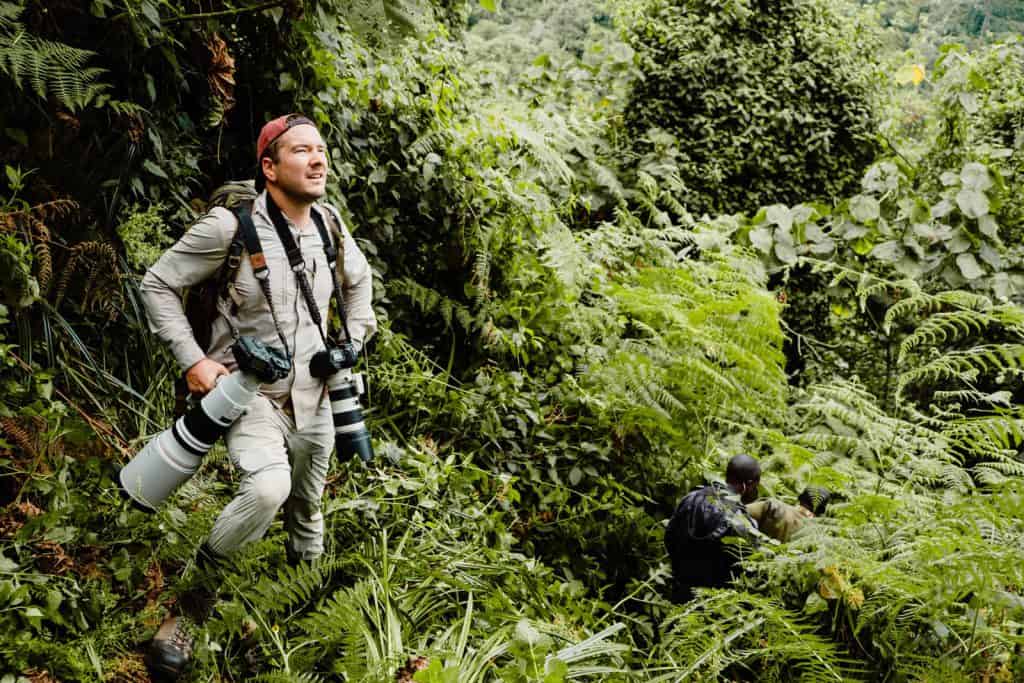
The first thing I was doing back in the day was dreaming up if this is the rate now, so where is it gonna stop? But that stopped pretty quickly. In 2016-17 the trend was over. I started to personally deviate and disconnect from the work I shot that was way too trend based. So another piece of advice to young starting photographers is to disconnect from the trends, but maybe that’s a different conversation. So in 2016-17 I started to disconnect from what I’ve been building and building online and that cost an instant stop to me growing in terms of numbers. But by rediscovering my personal and creative identity, by moving back into the human interest base, I was losing the numbers but I was gaining confidence in making that next creative step and the next step and the next step.
So essentially, one thing I can tell people about numbers is they’re not important. It’s easy for someone to say that, oh, I have substantial numbers, but if I learned one thing, it’s that you rather have 1000 people that buy anything you sell, than a hundred thousand people that are swiping all day for free and then leave without buying. And I think the trick in this whole industry is to convert people that view your work, into people that buy your work.
Stuart: We always say actually that if we look down our top sellers list, then it’s actually the people with the highest engagement and not the highest headline number. We have someone in the top 5 who has 20,000 followers but those 20,000 are really super engaged in his work. So, yeah, I completely agree with that.
I want to ask you a little bit as well because obviously you make your own work and that’s evolving over time, as you said, but also alongside that in 2020, during a pandemic, you went off and did this incredible side project, Prints for Wildlife. And it’s astounding where that’s got to in just two years. It’s the third year. I think last year you raised over a million dollars for African parks. We are always saying to creatives and photographers that it’s really important to have those kinds of side projects and other ways that you are engaging with your subject matter, with the industry.
And this is more than a side project. It’s become a huge thing in itself. How did that come about? How did that actually start?
Pie: I can say a lot of bad things about Instagram but I have to acknowledge that one of the most beautiful aspects of social media these days is community building. There is no other platform in the world, let’s generalise Instagram as social media, as social media. Impossible! Go back in time 20 years ago, if you wanna open a photography gallery, you’ve been dead on that. It was a lot. It’s a long way. It’s a long road. And these days, young kids can just open up their work to the world, get people to view it, build a community, discuss, get feedback, make friends for life and even marry and get kids. I see it happening all the time. That is the beauty of building a network and an audience or a community online.
When COVID happened in 2020, my agenda was just completely wiped. I lost 95% of my work in the first six months like field work as well as work at home. The whole world went into lockdown. I do 90% of my work in Africa. That whole air space was closed. I could immediately, not only feel the personal loss, but I could also feel and very well relate to the chaos that was happening in Africa. There was lots of debate happening in April-May 2020 where generally people would argue that it’s actually good for the planet if we stop flying for a bit. And it’s actually good for nature because nature can breathe again and if people just stop moving, the earth can heal. That was like the first general consensus.
I came back from Africa right before this whole thing started and I was still into conversations with people working for several NGOs and you could sense that it was chaotic. Tourism came to an abrupt stop and tourism is like the number one funding engine of all conservation in Africa. It’s the number one funding engine of so much important community work that is being done. And it’s the number one engine behind protecting species on the verge of going extinct and disappearing forever. Not necessarily the impact for the species was very immediate, but for the people protecting those species and for people protecting those parts and protecting those wildlife zones it was. By just simply talking to people in Kenya, Uganda and Botswana back in the day, in early 2020, I could immediately sense that support was needed and at the very same time, I knew that I was gonna be out of business for at least six months, while essentially that turned out to be like almost 18 months.
From a personal point of view, I just wanted to be relevant within this space without actually being in Africa. And then I met Marion, who is now, already for three years, my co-founding partner within Prints for Wildlife. We met online. We just started a discussion about what is the actual impact this is having on Africa and we really quickly discovered that we both had the same desire to make an impact that is going beyond our stories, beyond our photography. I was already dreaming up scenarios for years like how can I really make an impact that is about more than a magazine piece or more than like a print collection. And then we decided to just do it and Prints for Wildlife was born.
I’ll never forget the first week of launching the first campaign after three months of voluntarily building it, without really having a plan. We were just setting targets in an Excel spreadsheet and we were like, yeah, a $100,000, that would be like the dream. And then we did that in the first 24 hours! We just looked at each other and were like, yeah so if this is the start, what is happening? Where is it gonna end? So the first campaign ended at $660,000, which was six times our initial target. After experiencing this spirit and global support we got from people that never heard about this crisis before but also from people within the industry, conservationists, photographers, art buyers. We had such a diverse group of people like you and me, and I think that was the power of the campaign in the beginning and still is.
By offering $100 prints, we made wildlife art from very experienced and known photographers available for regular normal people. A $100 is still a lot of money for the majority of people in the world, but we made wildlife art accessible to a big audience. And 100% of the proceeds went to African parks, which Marion and I were from the first minute very very sure that there was actually only one organisation that should benefit from this because we deeply believe in their philosophy. So that’s how it started. Then we came back with a second edition last year which did $1.1M in four weeks putting the total number $1.8M now. And we’re going live on August 28 this year with the third edition. We don’t really have a target now because we’re disconnecting from that financial narrative and we’re going deeper in terms of marketing and communication, deeper into explaining people how we are actually using this money, because essentially it’s not about the numbers. It’s really about people understanding why they should buy these prints and support this cause. I believe that with equal support, like last year, we can hit that two and a half million number across three editions, which would be a very serious first milestone in, maybe who knows, the road to $10M.
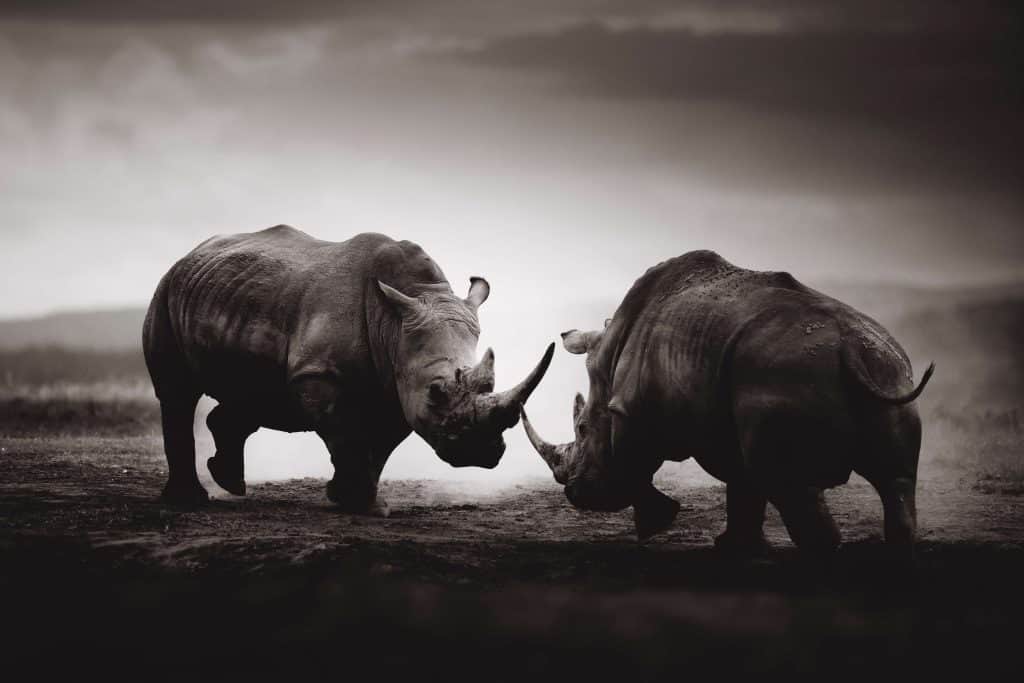
Stuart: It’s incredible! I think you touched on earlier that one of your interests is the intersection between humans and nature. And that’s also a theme in terms of wanting to support the African parks because if you support an ecosystem around that, which is economically viable, that sort of creates a local economy around people, tourism, and people going to experience the wildlife. Then it means that the economy is working with the conservation effort.
Pie: One big misconception, still very often made by people, is that in order to save animals, we should focus on animals. In order to save wildlife, we should always prioritise wildlife. But we came to a point in 2022 and there are so many people in the world that in order to save wildlife, we should stop worrying about wildlife and we should start caring about people’s welfare and people’s livelihoods. And the reason why is because in those areas where wild animals are still living wild lives, there is increasingly a growing pressure from the outside world, which is human encroachment. If you can create places in which those humans feel safe, appreciated, respected, valued in the long term and they start to understand the benefits of what it means to protect the animals that live close to their homes rather than kill them, because they see it as a trap, it is a generational event. We’re talking about decades of conservation being done.
That people-first approach is exactly in the DNA of African Parks network as an organisation. They come in, they seal deals that have a long term structure, that have a very collaborative approach with local, national, regional governments. They empower local people to do the jobs. It’s not a bunch of white guys coming in doing weird stuff. It’s people coming in that really only want local people to believe in their own future, that want local people to believe in the future of coexistence between the animals living inside the parks and the humans living outside the parks. That long term approach with such a strong people-first agenda is the one and only reason why we decided to support African Parks.
What’s happening as soon as tourism stops is funding stops. And if funding stops, rangers are not getting paid their salaries anymore. We’re not talking in the UK or in mainland Europe where there is social welfare and all those measurements that help people as soon as you lose your job but that’s almost nonexistent in Africa. And at the very same time, there are not 4-5 people depending on the sole income earner, but 25 or 30 or 40, or communities. So as soon as tourism stops and funding stops and rangers are not being paid salaries anymore, there’s two things happening: there is immediate need for money and there is a direct harm to decades of building that narrative around ‘you should believe in the power of conservation’’.That is directly violated and directly harmed. But that first impact, people actually losing their jobs had a massive consequence in many areas where African Parks operated. Luckily they manage with the support of Prints for Wildlife and the support of their donors and their donations to not even fire a single ranger. They continue to pay all the salaries which keeps the belief alive, that people are on the right track. But what’s happening in many other regions where I work is that people are immediately losing their jobs in many different areas, all across Africa, putting the whole family at risk. And there is just an immediate disconnect from that belief that they were on a good track.
So yeah, the impact is massive and the impact is still massive. And we’re just trying to help where we can, which means that the money we are raising that $1.8 million so far has been equally distributed across the 20 parks African Parks is operating in and is being used, for instance, in supporting rangers that have lives and families to sustain and support.
Stuart: That’s incredibly inspiring what you and Marion have created there. So when you put out the work, I believe you have over a hundred photographers, and there’s one image, one print from each maybe. Do you have a sense of what’s gonna sell the best?
Pie: Yeah, so by now I do have a sense and I have a bit of experience with selling prints myself. But when we started in 2020, it was an experiment. What kind of work to offer? Very editorial? Very high key, low key, fine art? There are so many terms in this business that actually don’t really make sense to a lot of buyers. So from the first minute, we decided to curate the gallery in a way that it just offers something for everyone. And we used, from the first day, a good mix of very known and appreciated big names in wildlife photography combined with young emerging talent.
One of our main values ever since building this whole organisation has been to be a platform as inclusive as possible within an industry that is not really inclusive, which is wildlife photography, but offer a platform that is as inclusive as possible when it comes to gender equality, but also especially to chances for emerging African photographers, by trying to empower them to tell their own stories. One of the biggest values since starting this has been to try to build an equal base between big names that are pooling power and young, new emerging talents that create equally good work but actually never really get the stage and the audience they deserve. And that started as 50 photographers outside of my own network. That’s really how it started in 2020. And it became, I’d say, like a talk of town and we grew into 175 wildlife photographers from, I believe, 68 different countries from 5-6 continents.
Now in edition three, we’re trying to bring the number a little bit down because last year, the offering, the whole paradox of choice was huge and messy. At some stage, there were 240 images on offer, which is just too much. So we decided now, in edition three, to bring down the number, which means that we’re shifting our focus even more towards emerging talent by running open calls, which we just finalised. This year’s open call brought, I believe, 16 images from new emerging talent in which we just asked our audience, our Instagram audience, to send in your best work, whatever your background is, whatever your experience level is, just send us your best wildlife image and we curate and pick winners. And last year we did it for the first time, the open call and out of 10 open call images, 5 were sold out within 48 hours, which is just people nobody ever heard about, predominantly from core African markets.
If you would ask me what makes you most proud after running Prints for Wildlife for three years, then that is it right? It’s not necessarily the numbers. It’s not like this is what really energises me to just keep building it to become that platform that’s really about equal opportunities for everyone.
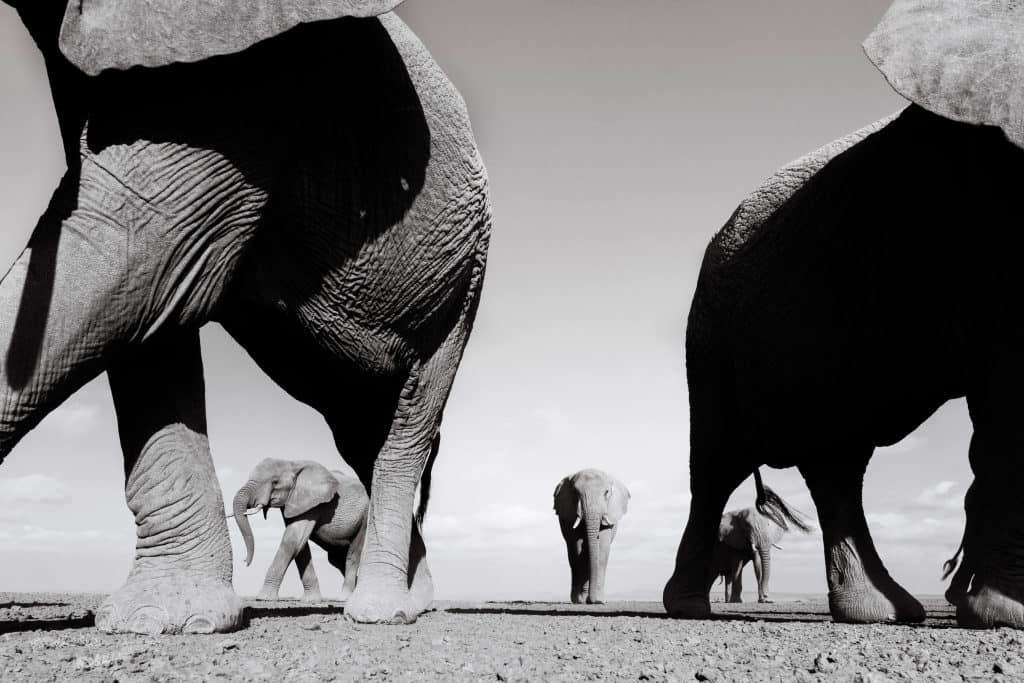
Stuart: Yeah, absolutely. We recently ran a print sale for Ukraine and we focused on getting as many Ukrainian photographers as we could to be part of that. And some of those photographers were actually really surprised by how much they sold and then they said to themselves afterwards, okay, I can go and do that. I can use the money I make to develop my own career and to make more work. And so I think one of the great levellers of the internet and Instagram and selling from anywhere is you can be from anywhere and you are literally under the same footing as anyone else. And it’s a real eye opener for people so I think that’s fantastic.
All the actual prints that sell, is there any kind of pattern there that you see in terms of subject matter or anything like that?
Pie: Yeah, so when it comes to wildlife, babies always work. Babies of any species, any composition, any lighting, as soon as there’s a little baby elephant or a baby lion or a baby zebra. So yeah, that’s one key takeout.
Generally people are more about the big game than about the small game. So rhinos, elephants, lions; they tend to sell very well. Other than that, it really comes down to personal taste. Sometimes we’re listing an image, not really knowing whether it will take off and then it just sells out instantly. Sometimes we’re taking guesses as well and just completely taken by surprise.
It’s really random but generally speaking, black and white versus colour is a good 50-50 balance, I’d say. Fine art versus editorial is more skewed towards fine art.
I think when it comes to wildlife art buying, the majority of the customers are looking for graphic stuff rather than real stuff, if you know what I mean. So this year we’re starting to move a bit more into editorial wildlife work like photojournalistic wildlife work, but without human inclusion. That is some rough terrain. So we’re now discussing future directions, whether or not we want to start different categories outside of wildlife. Maybe we do want to start a human interest, like a people driven category, which would open a completely new market because after curating a gallery for three years in a row now, I do find it to be increasingly harder and harder to pick the cherries. And for a reason, people are way more protective towards their own work now than three years ago.
Three years ago, everybody was understanding the immediate support that was needed because of COVID. And three years ago, 99% of wildlife photographers were sitting at home, jobless, just staring out of the window because nobody could travel. So as we moved into the second edition last year, and now into the third edition, people are back in the field, travel is possible, people are creating and building their own business again after not having much work for years. So yeah, it’s definitely changing, but we have good hopes that by maybe expanding into different directions, which could be travel photography, which could be human interest stories, but still, all revenue and all funds raised are going to African charities. I think that could be a very strong way forward.
Stuart: It never ceases to amaze me how generous photographers are with their work when charities want to put on a sale. It’s mind blowing. And when you think that these images they’ve spent years to acquire, the talent and they’ve travelled to these places and they’ve waited that week to get that shot. And they’re just willing to say yeah sure, it’s for a good cause. And that is mind blowingly generous.
Pie: Very big credits to the photographers that contributed over the past two and a half years because the single, most strong driver of the success of Prints for Wildlife is the generosity of the contributing photographers. Without that, none of this would be possible. You can run smoothly in marketing operations, you can build like the slickest online platform, but without those people spreading the news within their own communities.
The success of Prints for Wildlife has been really about peer to peer communication of photographers, telling their communities, regardless of the size. Big photographers and small photographers telling their top 150-200 peers: Buy my art and then you send money to charity. And the fact that all those 275 photographers were consistently willing to do that for us has been the number one driver of all the sales.
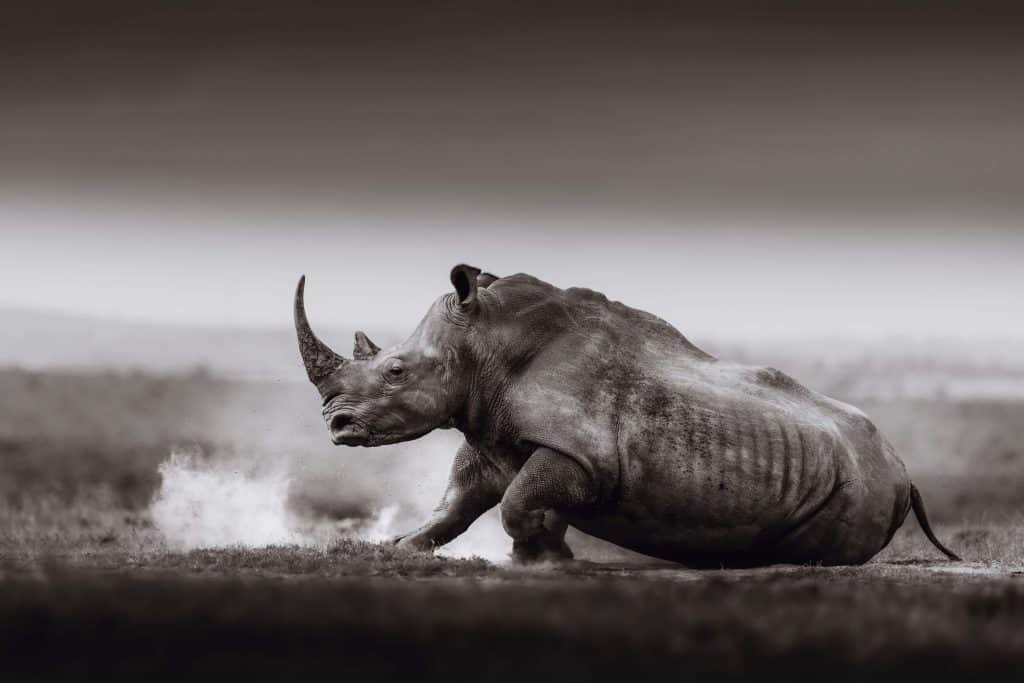
Stuart: So this goes back to something you were saying that you’ve effectively gone from a standing start here to, fingers crossed, within a three year period, raising $2.5M this year in total. It just would never have been possible to do that prior to social media. And I think social media, it does quite rightly get vilified for a lot of things it should be verified for. But I also think it’s nice to remember the benefits, the good side.
Pie: I couldn’t agree more. And even though it is vilified all the time, we should keep reminding people that when it’s done right with the right spirit and the right energy, it really brings together like-minded people with like-minded dreams. And it’s a new form of media, right?
We’ve been experiencing firsthand by setting up Prints for Wildlife, the effectiveness difference between traditional media and social media. We’ve been testing it. We’ve been working with traditional media and PR for years now and we’ve been testing the results coming out of it and comparing them with the results coming out of our own social media audience: mind blowing difference. There’s not even the runner up here. It’s social media that runs the show.
It’s people that follow you on Instagram that buy the art, it’s people that follow, join your newsletter, which in our case is an extension of our social media strategy, that buy the art. It’s not people that flick through magazines. It’s not people that look at an online website and end up. We’ve been measuring it for three years now and the absolute winner is social media.
Stuart: Wow. That’s really interesting. So when you say your newsletter is an extension of your social media, how do you make it really easy to sign up to that newsletter?
Pie: So one trick, one strategy we’re using in converting social media viewers into newsletter subscribers is sending out a personalised, private sneak peek preview print catalogue, that goes live 2-3 weeks before the event and your campaign goes live, which shows you the first 100 images, exclusive access. If you don’t sign up, you’ll never see that catalogue, which for people is a very good reason to just simply drop their email address and sign up. We won’t bother them with any marketing bullshit. They just get like a one off email and then towards the start of the campaign we start targeting them with, hey, the campaign is going live. You’ve been picking your favourite images. You’ve probably been even circling them in the catalogue. You’ve been eyeing them for a while. This is your time to buy.
People do feel the urgency because in the past few campaigns you saw that images were selling out really quickly. So we are really explaining to people if this is your favourite image, please be quick and buy it before anyone else, because it’s gonna sell out. And you do see it happen that we get lots and lots of emails of people missing out in the first 24 hours, because images are gone. So by building that urgency and sending out a print catalogue, that is a beautiful tool to let people engage with the sneak preview of what’s coming.
Stuart: It’s really interesting what you said there that some images sell out in 24 hours. How do you communicate that?
When you send out a catalogue, do you explicitly say, look, some of these are gonna go, so get your order straight away.
Pie: Our communication is really straight and simple to the point. Emails are short. Formats are very clean. Every email generally has one message so it’s not like a very big, long piece of text that people need to work their way through. It’s clear from the start, within the first three seconds exactly, by reading the subtitle line and the first three sentences of an email, what this email is about. So we do the very same thing.
This year we organised our first giveaway, which is another beautiful tool to collect email addresses and engage people. So we gave away, I believe it was 10 large prints, top sellers from last year. They get shipped to the 10 winners, randomly picked by an online selection tool. And what we did is we built a backend that operates with a software that is trying to encourage people to invite their friends to sign up because that gives them extra entries into the giveaway. So it’s just another example of a tool you can use, that is about giving people value in return for their email address. And then they enter a sequence in which we keep communicating clean and to the point. There is not much garbage. We don’t bombard people with emails. Towards the start of the campaign they get maximum one email a week, but the email has value.
Another thing we’re doing now is webinars. It’s called Photographers Spotlight, and we’ve been doing, I believe, 25 of them now. There’s still 10-15 to come in the upcoming weeks towards the launch in which people sign up and leave their email address. They sign up for a webinar. They get exclusive access. There’s 50 spots for each webinar and you can ask and fire away any question you have for that particular webinar. It’s a Q&A format. It’s 45 minutes. The photographer is revealing the image he or she is selling this year within the campaign and other than that, it’s all about the audience asking questions, engaging and interacting with the photographers. It will be recorded and it ends up in your email afterwards. So even if you sign up and you don’t show up, you get the recordings.
So that’s three different tools we’re using to just engage with our audience and give them more value, whether it’s like a print you can win, an exclusive print catalogue you get access to, a webinar you can attend. So we really try to offer value that doesn’t have an immediate return, but essentially you do get the return when you start the sales, because people are really eager to buy.
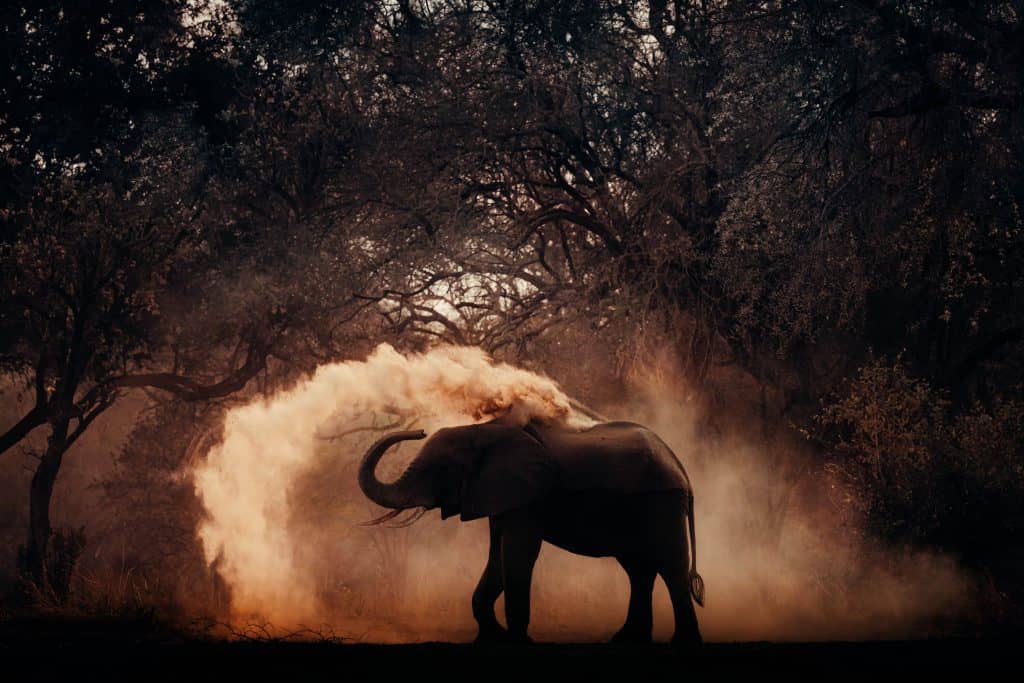
Stuart: Those webinars are fantastic because what we see is what people really want, when they’re gonna put something on their wall, then their friends are coming around for dinner or whatever it is and they’re gonna ask them about the image. And if they have that real context and the real background, and they can even say, hey, I actually chatted to the photographer and I asked him or her about the image and about maybe some anecdote around the trip or why they shot it or a story behind it. I think it’s such a powerful driver to want to own that print.
Pie: Yeah, it’s been Marion and my dream for the past two and a half years to have a little backstory to each and every image we’re selling, but you can imagine with 175 photographers on board of which 85 to 90% work in remote places. It’s really hard to get all the information in one platform. So this year we’re starting with the first: locations, back stories, a final quote from the person who shot it, to see if we can just make that image come to life a little more.
It’s another little experiment, but I’m sure it will make people connect even more with the image or the art they’re buying.
Stuart: I guess you must have a lot of experience in terms of the type of questions people ask before they buy. Does that also play into that? What kind of things do they wanna know about? The art or the product or what?
Pie: So by now we do have lots of repeat buyers, but in the first edition, people were really curious about the paper quality. We’ve been bragging since Day 1 about how incredible the Hahnemühle Natural Line Hemp paper is. So from Day 1 we’ve been really talking big about how incredible that paper is so people were just curious. One learning for me was that the majority of the people have no clue what a fine art paper looks and feels and what is it in the first place? So, many questions about the paper.
People were really mind blown during the second edition and we got lots of questions in the first edition about the fully carbon neutral approach of theprintspace. That is really in people’s minds. As soon as they unfold and unpack the order at home, they do see that 100% of the materials are biodegradable, which is a great asset and one of the reasons why we decided to partner with you, because it beautifully fits into the narrative of protecting the natural world. And we still get lots and lots of questions about material use. We really see that people that buy wildlife art are more aware of the ink, the papers, the backing materials, the shipping operators you work with. So that’s a lot of questions.
So this year we will start promoting image combinations. Call it Diptychs or Triptychs in which you buy 1, 2, 3, 4 pieces of art that go well together. So people are really looking for some help in the curation of that, some visual help. So this year, the website for the first time is gonna offer a tool or not a tool, but is gonna offer a visual inspirational page, which I’m having on my own website as well, in which you just explain people how easy it actually is to mingle combinations of images and create a wall full of wildlife art. So we do get lots of questions about building those sequences.
Stuart: I can imagine. This is what we are always saying to people who are looking to launch a store: as you go forward through doing successive print sales and timed print sales and project releases and stuff like that, you learn every single time you do it. Don’t try and work out everything perfectly upfront. Don’t deliberate between should I do this? Shall I display the image this way or that way? Just put the stuff out there and you get that feedback. People, I think probably a lot more than a lot of products, actually do want to talk to you about the product before they buy it, because it is such an emotional buying decision with art.
Pie: Yeah, totally. And I can speak from experience that I’ve been making this mistake a lot of times, you just mentioned, by trying to be too perfectionist and trying to remain in full control and trying to have the biggest offering and the most choice. But in essence, I think just stripping down to the bare minimum is the best way to start selling prints. And that’s what I tell people that ask for advice. You better start offering five prints to a bunch of friends than a hundred prints to a bunch of strangers. And if your friends are buying it and it ends up in their homes, people come and have dinner, they ask about it. And once again, as in the beginning of this conversation, embrace the slowness of it. Then one day they will come and show up and buy with you.
Of course, Prints for Wildlife is a bit of a different story because of its charity structure, but if we would’ve been a commercial operation, we wouldn’t see this. So in the first place, people come to support and buy prints at Prints for Wildlife because of 100% going to charity. Having said that, the speed in which we developed in the past three years is extraordinary. But if you look at personal businesses that have not any charity incentive, then it’s really good to embrace the slow speed and just test stuff and recalibrate rather than build and build for months and years and try to have this, the best looking print shop in the world, but then you don’t sell.
Stuart: Yeah, absolutely. I think that’s great advice. Now yourself and Marion, this obviously consumes all your time for months on end and that’s fantastic that you’ve gone and done this. We are always saying to people who have a side project to keep your side project within the industry, and then you find some sort of transferable skills.
Have you found anything that you’ve learned from doing this, that you’ve taken into selling your own work because you’ve got your own art store at pieaerts.com, right? And have you actually learned stuff which you’ve taken into that?
Pie: So much. I don’t even know where to start. When it comes to selling prints after curating one of the biggest wildlife online print galleries in the world, of course, I know exactly what sells and what doesn’t. So that in itself has a very big value.
During COVID, I’ve been creating a personal print collection which I released a few months ago. That has been built on all foundational knowledge coming out of Prints for Wildlife. So I knew exactly what kind of emotions people are tapping into. What kind of compositions people appreciate most, especially if you enter at quite a high end price market, which I made a first big step towards a higher price point last year with this recent collection launch. And that’s all built on those years of knowledge of interacting with consumers, of talking to 200+ photographers about buying art. So yeah, it gave me lots of leverage when it comes to building your own print business.
But what I did see as well is, and that really never had been the intention since day one is, everywhere I go in Africa, people know you’re one of the two people behind Prints for Wildlife, which brings so much joy and network possibilities and connections and friendships and opportunities. I really didn’t anticipate the impact of that truly when I started it. But people somehow know who you are and know the intentions of the project and know the impact and the scale of it and just appreciate the whole thing, which is just beautiful.
As I said in the beginning, when the pandemic started, me and Marion really didn’t know when we could go back to the one place we love so much. And the past few years have been such an enriching window in history in which I continue to build my relationships without being on the ground as much as I wanted to be. So yeah, side projects, I’m a very big supporter of them in many different shapes and forms. I wasn’t really planning, in the beginning of COVID, to move so deep into wildlife photography. In fact, I was trying to move deeper into human interest stories, which I’m finally now, since pandemic is on its return. But yeah, it just happened to me and I just moved with the flow and it was one of the most beautiful and enriching periods in my young career.
Stuart: Your career and life doesn’t always move in a linear direction. You find that there’s events like the pandemic or there’s just opportunities in your career that you would’ve liked to have gone for. And it’s never a straight line to where you want to go, but if you are willing to always find a way to move forward in some way, and you’re not quite sure how it’s gonna benefit your career in the long run, but you are doing that thing and you are throwing yourself into that thing at that point. And as you said earlier, you connect the dots in reverse and you say, oh, okay, that helped me move to the next stage of my career.
How hard is it to make a viable career as a photographer these days? Do you think it’s got harder since you started out? Or do you think it’s got easier?
Pie: No, it definitely got harder. It’s a very competitive industry. It’s a very solitary profession. So that’s one thing people that think about becoming a photographer one day, tend to forget that it’s really solitary, which means that it’s just you yourself. You’re celebrating your own successes. You’re dealing with your own disappointments. So the one thing I’m missing these days is the support of your team of colleagues, which I had in my previous life every day, all day. But other than that, it’s a very competitive industry that really centralises a lot around winning awards, producing high quality content on a really consistent basis. Social media almost makes you believe you have to put up a strong image every day. So it’s a really competitive field of business. And if you can’t handle that heat and that pressure, I’m not sure if it’s the right choice for you. So that’s one thing I have to say about it.
I’ve been going through ups and downs in the past few years as well. When it comes to self-doubt, when it comes to uncertainty, it’s lots of trial and error, but I have to say that by now, I found a really good way of sustaining myself. It’s worth mentioning that it’s something I’ve been craving for since day one. 90% of my work is free work so I’m doing only 10% of client work, but that also really is possible because a big share of my income is print. I’d say 50% more or less. And also because I do invest in education as well when it comes to offering master classes, mentorships, one on one group master classes, online mentorships, long term, short term, which has nothing to do at all with becoming a better photographer but it’s all about sharing my knowledge and my experience with like-minded people. And that gave me a substantial income to keep investing in telling my personal stories, my free work stories and disconnect from doing client work.
There’s nothing wrong with client work, but my highest value as an artist is freedom. That is my most important value and it’s really the toughest value to acquire. By focusing on projects like Prints for Wildlife, and by focusing 20-30% of my time on building educational formats, rather than being in the field, I allow myself to keep investing in my own narrative and my own stories I believe in. So I totally believe it’s possible for everyone. It’s hard work. It’s like 24×7. It really never ends. The learning curve, I believe, also never ends. But it’s possible. Yeah, it’s definitely possible.
Stuart: Final question. If you could give yourself some advice when you started 15-17 years ago, what would you say to yourself with the knowledge that you have now?
Pie: I think what’s really important in building this dream or life as a photographer, and I believe I mentioned this briefly already, is to try to turn inwards rather than outwards. Question yourself. Why do you want to pick up that camera in the first place? And that’s a question I only started asking myself 3-4 years back after shooting for 10 years. But I never really understood the power of it and the simplicity of it, by just going back to the beginning, back to the drawing board and trying to put that answer on one single sheet of A4 paper. Because you can easily write books about it, but try to be really brief.
Why do you want to pick up a camera? Why do you want to tell story X, Y, Z? Why do you want to convince people to believe in something you believe in? If you then go back to the essence of understanding it yourself, it becomes really easy to convince other people to believe in the same dreams, to convince clients to buy your work, to convince art galleries to list your work, to convince people to buy your books and to keep buying them.
I do see lots of people trying to create something that taps into the needs and expectations of your environment. When I started to understand that there is only one expectation that matters, and that’s your own expectations, of your own life as a human photographer or God knows what. That’s where change and start and progress and realising dreams is happening.
Stuart: Thank you for an incredibly insightful interview and we wish you the best of luck with the Prints for Wildlife which launches on the 28th of August. In the show notes and the blog piece about this, we’ll also put a link to Prints for Wildlife, so people can sign up for the presale catalogue as well.
Pie, thank you very much for your time today. Really appreciate it.
Pie: Thank you, Stuart.
